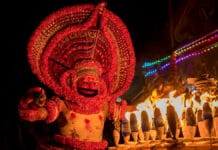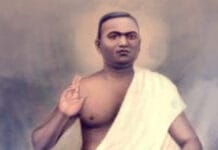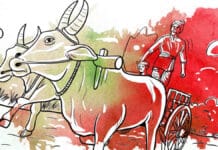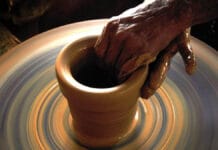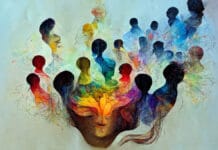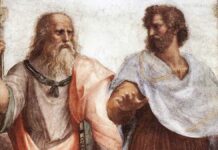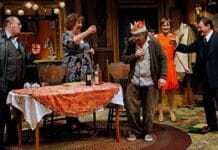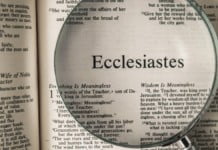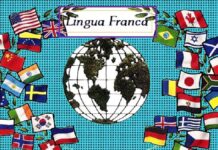Heroic ballads are traditional songs composed and sung by bards or panegyric singers to celebrate the valour, strength, and accomplishments of legendary warriors. In Kerala, the northern ballads known as Vadakkan Pāttukal were composed and performed by the Pana community, a bardic caste responsible for preserving these oral traditions. These ballads narrate the adventures of celebrated fighter-heroes, aiming both to spread their fame and to honour them through song. Though many such ballads once existed, only twenty-four are currently available in published form, representing the most well-known among them. The songs were not only sung by male bards but were also performed by women during agricultural activities such as paddy planting, indicating their deep integration into everyday cultural life.
- Heroic ballads are traditional songs composed and sung by bards or panegyric singers to celebrate the bravery and exploits of legendary warriors.
- In Kerala, these are known as Vadakkan Pāttukal (Northern Ballads), composed and sung by the Pana community — a caste of hereditary bards.
- The ballads narrate the adventures of fighter-heroes, spreading their fame and honouring them through poetic storytelling.
- Around twenty-four northern ballads survive in published form, representing the most popular ones.
- Many of these songs were also sung by women during agricultural work, such as paddy planting, showing how deeply they were rooted in everyday life.
Famous Heroic Families and Fighters
Among the numerous families of warrior-heroes extolled in the ballads, two stand out for their enduring fame—the Puthuram Thiyya family and the Thacholi Manikkoth Nair family. The most renowned heroes include Aromal Chekavar of the Puthuram family and Thacholi Othenan of the Thacholi lineage, both celebrated for their martial skill and sense of honour. Unniyarcha, also of the Puthuram family, occupies a special place as the foremost among women warriors. The ballads typically revolve around ankam, or armed duels, fought between rival heroes. These duels often arose from a cycle of vengeance known as kutipaka, where one fighter avenged the death of a maternal uncle or kin killed in an earlier combat. Other causes of conflict included personal disputes, romantic rejection, or rivalry in the field. Thus, behind their heroic grandeur lay complex webs of family honour, social obligation, and emotional tension.
- Two families dominate the heroic ballad tradition:
- Puthuram Thiyya family
- Thacholi Manikkoth Nair family
- Renowned heroes include Aromal Chekavar (Puthuram family) and Thacholi Othenan (Thacholi family).
- Unniyarcha, of the Puthuram lineage, is celebrated as the most famous female warrior in the ballads.
- Most stories centre around ankam (armed duels) between rival heroes.
- Causes of duels include:
- Kutipaka – cycles of vengeance for the death of a relative in an earlier duel.
- Romantic rivalry – refusal of a fighter’s proposal leading to abduction or conflict.
- Personal disputes or rivalries between equal fighters.
- Two families dominate the heroic ballad tradition:
Social and Historical Context
Historically, the heroes celebrated in these songs were not merely legendary figures but mercenaries employed by feudal lords, landlords, or royal families to fight on their behalf. In the absence of a formal judicial system or centralised authority, such duels functioned as a socially sanctioned means of settling disputes. The ankam thereby acquired legal and moral legitimacy, and the victorious fighter’s righteousness was publicly acknowledged. Moreover, these duels also generated revenue for the local rulers, making martial expertise and the kalaripayattu training system politically significant. The ballads thus reflect a world where warfare, justice, and social prestige were interwoven, and where physical courage symbolised both personal integrity and communal duty.
- These fighters were often mercenaries, hired to fight on behalf of royal families, landlords, or ruling elites.
- In the absence of a formal legal or judicial system, such duels functioned as a socially sanctioned means of justice.
- The outcome of an ankam decided who was righteous in a dispute.
- Ankam also generated revenue for kings, enhancing the political value of kalaripayattu (martial training).
- Martial culture and kalari institutions thus gained great social and political significance in pre-modern Kerala.
Knowledge and Composition Techniques
From the standpoint of knowledge systems, the Vadakkan Pāttukal reveal a sophisticated understanding of oral composition and poetic technique. The noted historian and epigraphist M. R. Raghava Varier has analysed the structure of these ballads using insights drawn from the Russian folklorist Vladimir Propp’s study of narrative morphology in fairy tales. Varier demonstrated that northern ballads employ stock expressions and formulaic patterns to describe the hero’s appearance, attire, journey, and combat. Each ballad follows a recognisable narrative sequence that includes the hero’s departure from home, a warning or interdiction, its violation, the appearance of a villain, the ensuing harm or loss, the hero’s trial and combat, and finally, the resolution through victory and restoration of order. These elements, though recurring, are artistically varied within each narrative, ensuring both familiarity and creativity.
- The Vadakkan Pāttukal reveal advanced oral compositional techniques and poetic structures.
- Historian M. R. Raghava Varier, inspired by Vladimir Propp’s structural analysis of Russian folktales, studied their narrative design.
- Each ballad uses stock expressions and formulaic verses to describe:
- The hero’s appearance and attire.
- His journey to the battlefield.
- The nature and sequence of the combat.
- Varier found that the northern ballads share a consistent structural pattern, with creative variations depending on the legend.
Common Narrative Structure
According to Varier’s analysis, every Vadakkan Pāttu shares a structural framework similar to Propp’s universal model, though adapted to local contexts. Typically, the hero sets out on a journey, violates a prohibition, encounters the villain, engages in combat, overcomes challenges, and ultimately returns triumphant. If any segment appears to deviate from this order, it is usually because parts of the song have been lost over time—often the beginning or concluding sections. This structural continuity across ballads demonstrates the oral community’s intuitive understanding of narrative coherence and rhythm.
Each ballad follows a broadly similar sequence of events:
- The hero leaves home.
- An interdiction (warning) is issued: “Do not go there.”
- The warning is violated, leading to the appearance of the villain.
- The villain harms the hero’s family or causes a loss.
- The hero sets out to restore justice.
- He is tested or attacked on his journey.
- The hero and villain fight directly.
- The villain is defeated or killed.
- The initial loss is remedied or the wrong is set right.
- The hero returns home, often pursued by enemies.
- The hero escapes or hides successfully.
- The villain’s deception is exposed.
- The hero gains new recognition or status.
- The narrative ends with the hero’s triumph or symbolic reward (marriage, fame, or succession).
Oral Tradition and Collective Authorship
The Vadakkan Pāttukal were thus composed by the Pana bards, who inherited not only the oral techniques of versification but also a shared repertoire of stock phrases, metaphors, and stylistic devices. Each bard was trained to draw upon a standard set of poetic formulas, enabling spontaneous composition and performance. When narrating a new story, a singer could easily select and recombine existing verses to suit the context, creating the impression of originality while maintaining traditional form. These songs, therefore, represent a collective literary enterprise rather than individual authorship. Their artistry lay in the ability to sustain continuity within oral culture through repetition, variation, and rhythmic recitation.
- The Pana bards possessed a shared repertoire of stock words, metaphors, and verses.
- Every singer could compose spontaneously, choosing suitable lines from the traditional stock to fit a new story.
- These ballads were collective creations, not the work of individual authors.
- The artistry lay in the improvised performance, which maintained both continuity and variation.
- The oral form ensured the transmission of culture, memory, and values across generations.
Structural Features and Universal Traits
The Vadakkan Pāttukal embody the universal features of oral heroic literature. They share with global ballad traditions a fixed narrative order, formulaic expression, and communal authorship. The knowledge embedded within them lies in their poetic structure and in their reflection of a social world that valued courage, honour, and kinship loyalty. By examining their composition, we uncover not only the technical artistry of oral poetry but also the cultural logic that governed Kerala’s martial and moral traditions. The heroic ballads thus serve as both artistic achievements and historical documents, illuminating the intersection of narrative form, social order, and collective memory in the evolution of Kerala’s cultural identity.
- The Vadakkan Pāttukal exhibit universal characteristics of oral literature, such as:
- Fixed narrative sequence and recognisable motifs.
- Use of formulaic and repetitive language.
- Stylised descriptions of costumes, weapons, and duels.
- Communal ownership of poetic tools and themes.
- Missing or altered sequences in the ballads often indicate lost segments, especially at the beginning or end.
- Despite these variations, the ballads retain narrative coherence and adhere to a universal heroic pattern.
- The Vadakkan Pāttukal exhibit universal characteristics of oral literature, such as:


